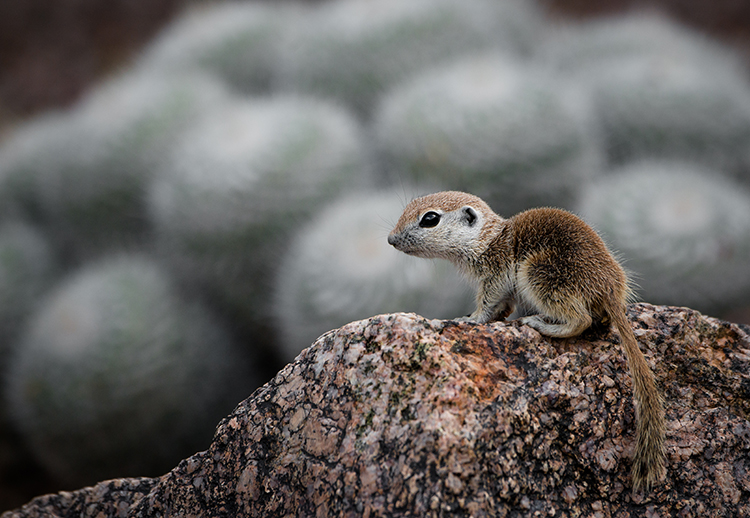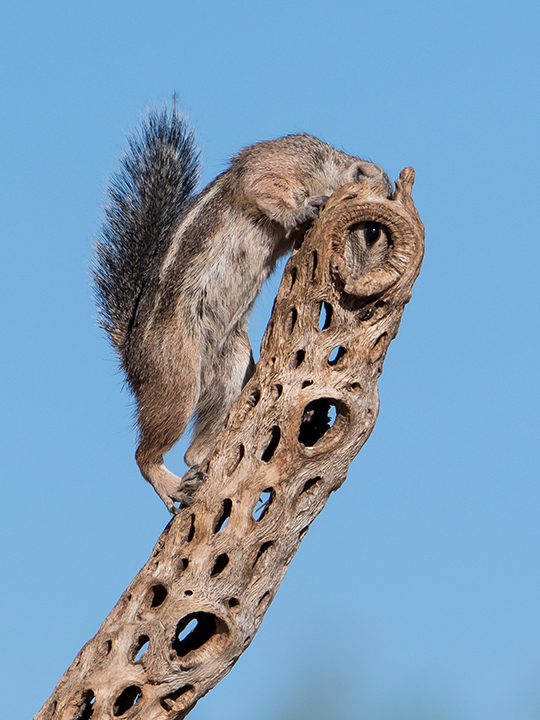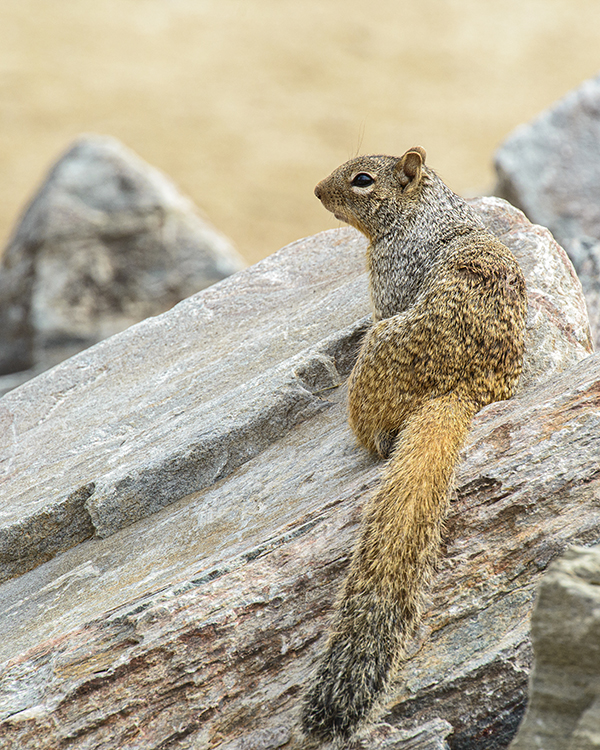Sonoran Squirrels

Writer Joseph J. Airdo
Photography by Peggy Coleman
[dropcap]I[/dropcap]f this year has taught us anything, it would be that we should expect the unexpected.
Who would have guessed back at the beginning of 2020 that stay-at-home orders, face coverings and routine temperature checks would become some of the most key characteristics of our day-to-day lives? Or that stocking up on toilet paper would become an activity to which we could all relate?
Over the course of the past eight months, we have learned that preparing for all of life’s unexpected occurrences is absolutely essential to our survival as a species — a lesson that squirrels aced long before we humans ever even walked this planet.
Just as we frantically emptied supermarket shelves of toilet paper this past spring, squirrels spend each autumn searching high and low for food and then hiding it so that they and their families have proper rations during cooler winter months when food is far more scarce.
Although Harris’ antelope squirrels — commonly mistaken for chipmunks — are active year-round, Arizona’s other three varieties (rock squirrels, round-tailed squirrels and Arizona gray squirrels) either hibernate or at least retreat to their burrows in the winter.
Eating some combination of green vegetation, cactus, wildflowers, seeds, mesquite beans, insects and occasionally mice, our state’s squirrels take proper provisions to ensure they get through whatever the world throws at them.
Photographer Peggy Coleman, whose image of a round-tailed squirrel was featured in Arizona Game and Fish Department’s 2016 wildlife calendar, knows that ample preparation is just one of many lessons that we can learn from squirrels, though.
“With all wildlife — but especially squirrels — my favorite observation is behavior,” Coleman says. “I love to see how they interact with other critters and animals. Their antics bring so much happiness and joy. I especially love seeing how they interact with their young. They are very caring.”
Coleman’s autumnal squirrel photography featured in Images Arizona’s photo essay this month is meant to encourage much more than just ample preparation. It is also meant to encourage more caring behavior that brings happiness and joy to our community. We hope that these Sonoran squirrels serve as much a sign of the giving fall season as they do a reminder that we are all in this together.



Spreading the Joy
Peggy Coleman’s favorite aspect of photography is sharing her work with the world.
“I love the joy that wildlife photography brings to others,” she explains. “There are so many of us who are homebound or cannot get out and look at nature. The variety of wildlife that you see worldwide — but especially here in Arizona — is staggering. The opportunity to share my work and then see people’s reactions to it is definitely the most fun part of photography.”
Ten years ago, Coleman founded Birding Arizona and the Southwest — a Facebook group dedicated to bird photography, birding education, information and enjoyment that she continues to oversee and administer. The group quickly grew from a humble 30–40 members to a respectable 500 members. Today, the group consists of more than 16,000 members.
In 2014, the photographer encountered a green heron playing around on a log and fishing. The bird went down into the water and spread its wings, at which time Coleman quickly snapped a photo.
“That split-second shot has now traveled the world more than a million times,” says Coleman, noting the photo earned a National Audubon Society award in 2015. “It has inspired artists for paintings, sculptures, tattoos, sketches, sidewalk art, jewels, blankets and quilts. I still get e-mails years later. It is really a fun gift for that to be out there circulating the world.”



About the Photographer
Peggy Coleman first became interested in photography while in high school, where she was voted most likely to succeed with aspirations to become the next Barbara Walters. However, she got married and started a family shortly after graduation and put the camera on the shelf where it continued to sit as she pursued a career as a mortgage loan originator.
The advent of digital photography rekindled Coleman’s interest in the artistic medium, prompting her to explore Arizona in search of wildlife to capture on camera.
The Northwest Glendale resident estimates that it was about 15 years ago that she fell in love with nature — especially birds — but has trouble remembering exactly when that love affair began.
“When you are so much in the thick of something, it just sort of wraps around you like a blanket,” Coleman explains. “It is just something that you always have with you.”
She recalls walking the trails at Desert Botanical Garden and coming upon a cactus wren. For just one brief moment, she snapped a photograph of the bird looking upward. When she arrived back home and looked and the shot, she was overtaken with inspiration.
“I knew that I had found my love, my interest and my passion,” Coleman says.

